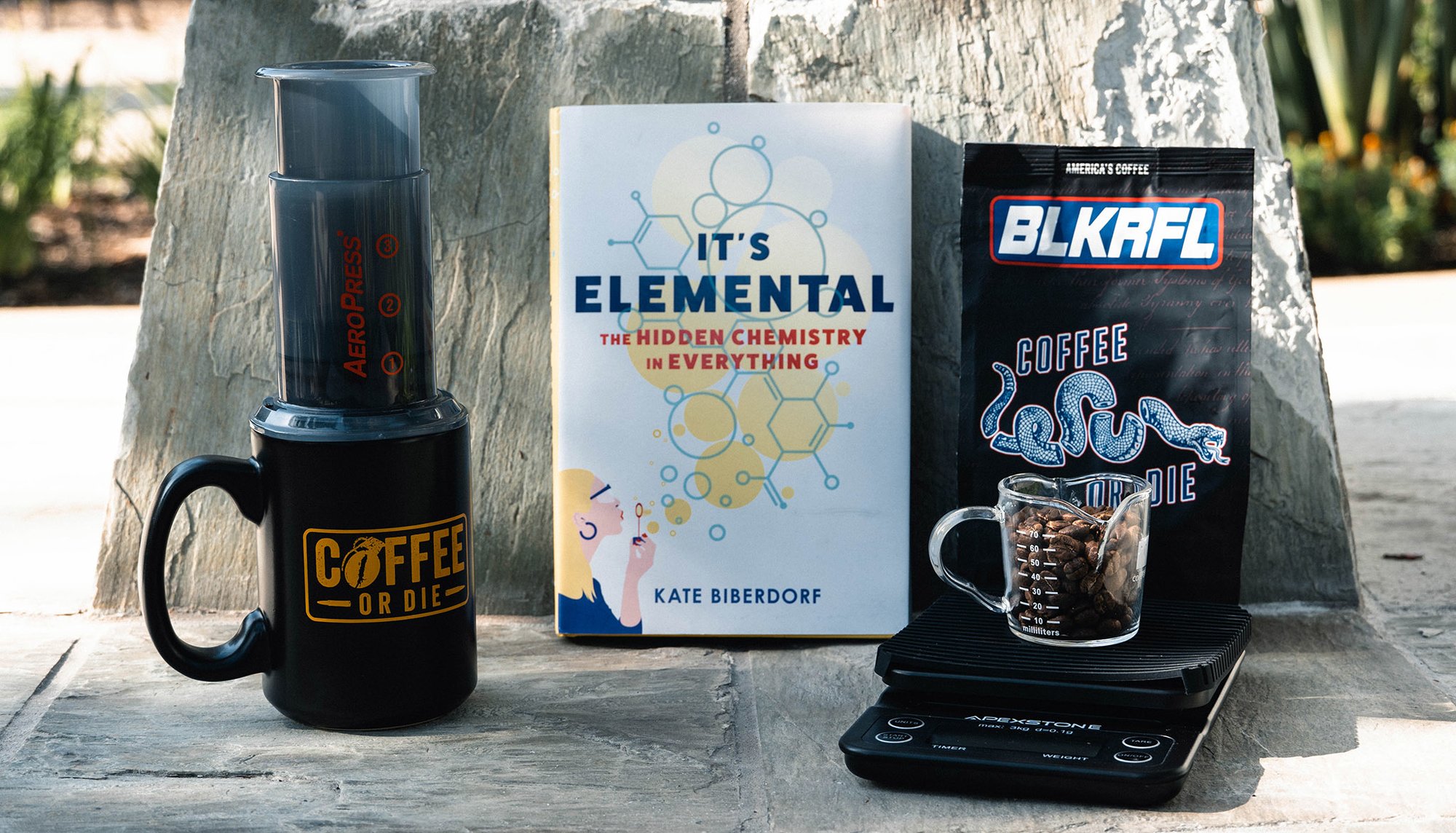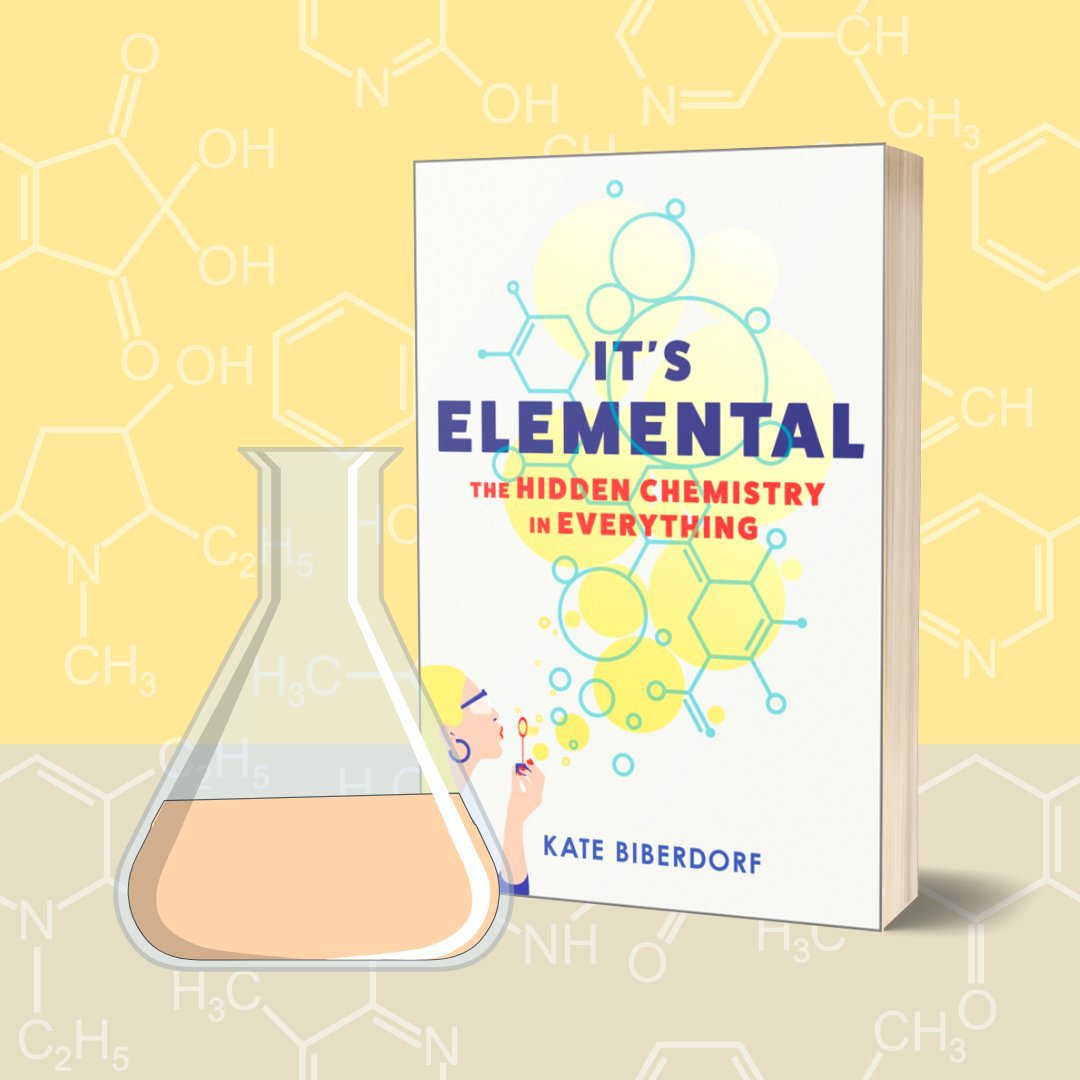New Book ‘It’s Elemental’ Explores the Hidden Chemistry in Coffee

What’s not to like about reading and experimenting with different brewing methods outside? Photo by Kelly Getzelman/Coffee or Die Magazine.
According to a recent study by the National Coffee Association, seven out of 10 adults in the United States consume at least one cup of coffee every week, and 62% drink coffee every day, proving that coffee consumption is an essential part of many Americans’ lives. But why exactly do so many of us choose coffee to get our daily caffeine fix? And is there a scientific reason behind it?
In a new book titled It’s Elemental: The Hidden Chemistry in Everything, author Kate Biberdorf dives deep into the science behind our favorite caffeinated beverage. Biberdorf, known by her fans as “Kate the Chemist,” is a scientist and chemistry professor at the University of Texas.
Biberdorf “travels the country building a STEM army of kids who love science as much as she does,” according to Penguin Random House, and is well known for her popular series of books on science for young readers. This first writing for adults is an amusing, easy-to-read book that uncovers the fascinating chemistry behind daily activities that many of us take for granted.

Whether it’s in your daily workout routine, hanging out with friends at happy hour, or even that sacred first cup of joe in the morning, Biberdorf explains the fundamental principles behind the chemical reactions that take place in our daily lives.
Chapter 5 of the book takes readers on a journey through a typical day, starting with what we consider the best part of the morning: coffee.
“Have you ever heard someone say that they’re cranky in the morning until they’ve had their first cup of coffee?” Biberdorf writes. “Or maybe you’ve noticed that your boss is friendlier after she drinks her espresso in the morning. There is definitive evidence that coffee affects our mood, and it’s largely because people easily develop a dependency on the caffeine molecule. They feel irritable when their body is actively searching for more.”
The chapter continues with an explanation of what happens when caffeine enters the body. While the average coffee drinker may never use the scientific term for caffeine — trimethylxanthine — Biberdorf does a great job of explaining the science and function of the molecular formula and how the chemical binds to specific receptors in your brain.

Biberdorf also takes a look at the science of roasting coffee. “When the beans are initially heated, they absorb energy in what we call an endothermic process,” she writes. “However, at around 175°C (347°F), the process suddenly becomes exothermic. This means that the beans have absorbed so much heat that they now radiate the heat back into the atmosphere of the roasting machine. When this happens, the settings have to be adjusted on the equipment, in order to avoid over-roasting the beans (which sometimes results in burnt-tasting coffee). Some roasters will even toggle the beans between the endothermic and exothermic reaction a couple of times, to achieve different flavors.”
It’s Elemental finishes off the chapter by dissecting two of the most critical factors to brewing the world’s best cup of coffee: water and grind size. The author gives a detailed explanation of why your hot water should be just “off the boil,” which, apart from espresso drinks, is the preferred brewing temperature for most coffees.
If you enjoy taking a closer look at the chemistry behind your favorite caffeinated beverage, we highly recommend adding this book to your library.
It’s Elemental: The Hidden Chemistry in Everything by Kate Biberdorf, Park Row Books, 352 pages, $27.99
Read Next:

Kelly Getzelman is a former staff writer for Coffee or Die Magazine. A retired Navy SEAL chief petty officer, Getzelman has nearly two decades of special operations experience and is always ready to ship out on his next epic coffee adventure.
BRCC and Bad Moon Print Press team up for an exclusive, limited-edition T-shirt design!
BRCC partners with Team Room Design for an exclusive T-shirt release!
Thirty Seconds Out has partnered with BRCC for an exclusive shirt design invoking the God of Winter.
Lucas O'Hara of Grizzly Forge has teamed up with BRCC for a badass, exclusive Shirt Club T-shirt design featuring his most popular knife and tiomahawk.
Coffee or Die sits down with one of the graphic designers behind Black Rifle Coffee's signature look and vibe.
Biden will award the Medal of Honor to a Vietnam War Army helicopter pilot who risked his life to save a reconnaissance team from almost certain death.
Ever wonder how much Jack Mandaville would f*ck sh*t up if he went back in time? The American Revolution didn't even see him coming.
A nearly 200-year-old West Point time capsule that at first appeared to yield little more than dust contains hidden treasure, the US Military Academy said.












